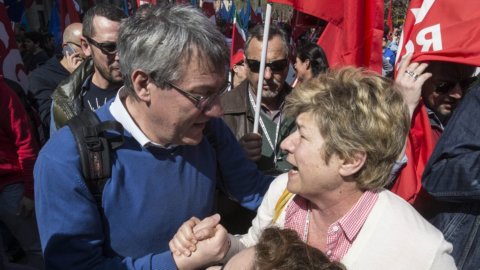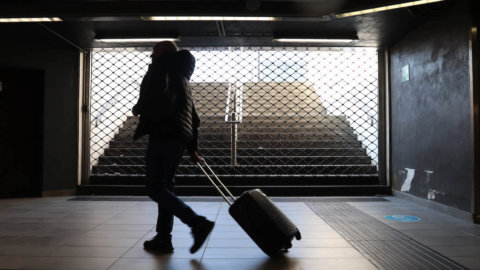By chance, in the spring of 1986, while participating in a conference of little importance in Rome, I discovered that the successor of Luciano Lama, as general secretary of the CGIL, would be, against all odds, Antonio Pizzinato and not Bruno Trentin. The news appeared the next day only in my newspaper and I had a few hours of notoriety. I mention this episode only because that story was a turning point in the history of the Italian left. Let's see how things went.
Berlinguer had been burned by the long years of non-opposition to the governments of national unity from which the PCI had in any case been excluded. His distrust grew after the assassination of his main interlocutor, Aldo Moro, and the rise to the center of the political scene of Bettino Craxi. Berlinguer decided to return to a tough opposition and to get closer to the working class: he showed up at the gates of Mirafiori to support the struggles of those workers in whatever form they might take, and when Craxi, prime minister, decided to cut some points of the escalator, not only opposed it in Parliament, but once the law was approved he proposed to cancel it through a popular referendum.
In 1984 Berlinguer was taken ill during a rally in Padua and died a few days later. The emotion was great throughout the country and had a big effect in the European elections which were held shortly after and in which the PCI was the first party with over 33% of the votes. It was the swan song: the year after the referendum won the no. It was a terrible blow and in the communist party – Alessandro Natta had become secretary – a bitter debate was opened (which took place, as was the custom at the time, in private form) between those who wanted to continue along the workers' line and those who, like Napolitano, asked for a reformist turn with membership of the Socialist Party in the European Parliament.
It was said that the CGIL was the transmission chain of the PCI and on that occasion it certainly was (for the last time). The decision was made by the leadership of the Communist Party. Naturally, Pizzinato's election was a victory for the workers. Pizzinato is the son of Friulian peasants, he had started working as a boy as a boy, he had moved to Milan, a worker at Borletti, and there he had begun his career as a trade unionist. Trentin had been secretary of the metalworkers, but it was a different kind of man: he belonged to the Venetian intellectual bourgeoisie, the son of an anti-fascist who emigrated to France, with shareholder ancestry, married to a good and important French journalist.
Curriculum vitae also probably counted in the choice, which however proved to be fragile, inadequate and anti-historical. Two years later Trentin took his revenge and became general secretary of the CGIL. Meanwhile the world was changing radically. Luciano Lama had reigned in the CGIL for 16 years, from 70 to 86, but from then on no one would have been more secure on the throne. The same thing was true for the PCI: until then the change of secretary took place post mortem or due to physical impossibility to carry out that role: now furious and public battles were opening to take that post (it can be noted that the same process was taking place in the USSR ).
[smiling_video id="64596″]
[/smiling_video]
Let's jump forty years and more. The CGIL is preparing to elect Camusso's successor. The Democratic Party (which has only a distant relationship with the PCI) has practically no say in the matter. The election will take place with a complicated method, where the votes are expressed by members of the management and by representatives of the base. Camusso seems to support Maurizio Landini, former secretary of Fiom, from Emilia, who began working at the age of 15 as an apprentice welder. His opponent is Vincenzo Colla, also from Emilia, more linked to communist culture (although revisited). The main element that differentiates them is the relationship with politics as representation: Landini is a movementist, he thinks that the political line must emerge from the base; Colla respects the criterion of representation as a continuous check between elected officials and voters and indeed fears that without institutional representation the risk is dangerous populism. From this he deduces that Landini has an eye towards the 5-star movement, as does the extreme left. Why does Camusso support Landini? Because he has lost hope that politics wants to return to dialogue with the unions (and Renzi is to blame for him here) and because many workers voted for Lega or 5 stars.
In this new confrontation who is Pizzinato and who is Trentin? No one, there is no inheritance to collect. In the new world you sail without knowing the sea chart and with a shabby ship.





